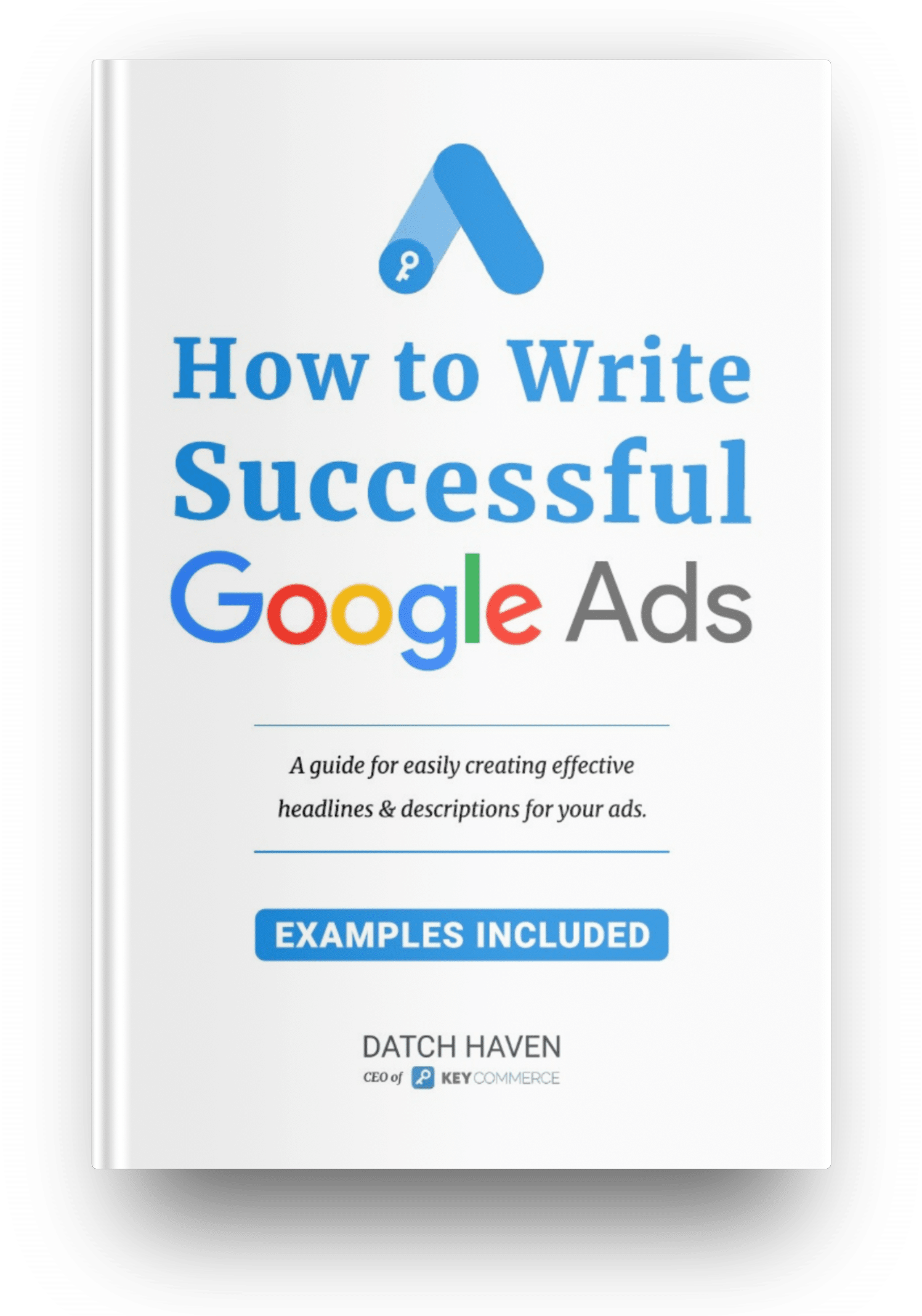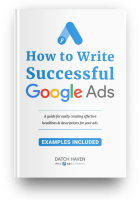Google AdWords advertisers see the Quality Score as the holy grail, and the majority of them are familiar with it.
Here's the thing, having a high-quality score doesn't automatically mean success but having a low Quality Score means that you need to step up your game.
I know it sucks that you worked hard on creating a compelling ad text, used specific keywords and improved your landing page only to find out that you got a low-quality score from Google.
It's like when you're still a student, and you studied hard for a test, but you even got a failing mark. It can be a bummer!
Marketers don't fret since there's a solution for you!
The key is improving your Google ads quality score to reach the top of the Search engine results page and gain more traffic to your site.
In this post, I'm going to share with you everything about google quality score and how you can optimize and improve it.
Now let's jump into the definition of the quality score so that you'll understand how vital quality score is for your ads.
What is Quality Score?
Quality Score is the metric that Google created to estimate the quality of your ads, keywords and landing pages and Google uses these three areas to grade the ads.
Ecommerce brands use the quality score to check the performance of their advertisements. They also use this to get more clicks, rank on top and generate more conversions or revenue.
Google quality scores impact rank and the Cost per Click or CPC of an ad. Google grades from 1-10 on how well the three areas are performing.
The thumb rule is good scores mean low pay per click. Google is happy, and advertisers are so glad too, it's a win-win situation here!
You can find the Google quality score at the “Quality Score” column of the Google Ads report.
Therefore ecommerce brands should continuously check their quality score to improve on the areas that they have been neglecting.
Here are the three subcomponents of the Quality Score:
1. Expected Click-Through rate
2. Ad Relevance
3. Landing page Experience
The value of each component will be as follow:
⦁ Below Average
⦁ Average
⦁ Above Average
What does Google use it for/why does it exist?
The quality score exists for a reason, and that is to keep advertisers on the loop of the performance of their ads. And at the same time as a means for Google to control its cash flow.
Without quality scores, Google advertisers can use low-performing ads and can still rank on top. This system is bad for Google's business and reputation.
Imagine seeing the Google search ranks filled with bad ads and click-baits? Who would've trusted Google and the ads they're advertising. The answer is none, that's why Quality scores are born.
So it makes sense that Google will use a quality score to keep everything in check and high-quality just like their brand online.
So for advertisers, if you want to be on top, you've got to work hard. Also, the quality score serves as a deciding factor for Google to determine your rank in the ad auction.
Here's the Google algorithm/computation of your Ad Rank
Quality Score X Cost-Per-Click (CPC) Maximum Bid = Ad Rank (position)
Factors that affect your Google Ads Quality Score include:
⦁ Click-through rate (CTR)
⦁ Google Ads account performance history
⦁ Landing page relevance and quality
Bottom line is the more people click your ads then it's more relevant to online shoppers and those who are searching for your products online.
Here’s a more visual representation on how Quality score computation works.
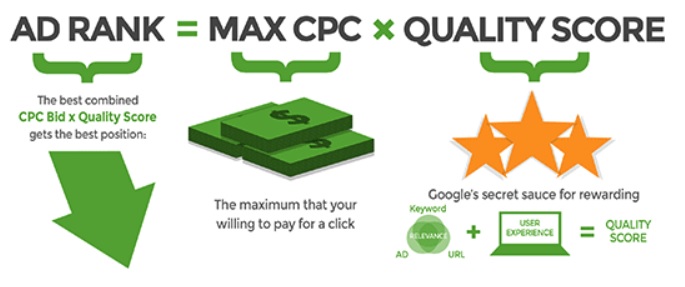
I understand that newbie PPC practitioners tend to get confused on the terminology between Quality Score and Ad Rank. They both have the same concept of scoring and ranking, and all of that stuff.
So let me break it down for you.
The difference between Quality Score and Ad Rank
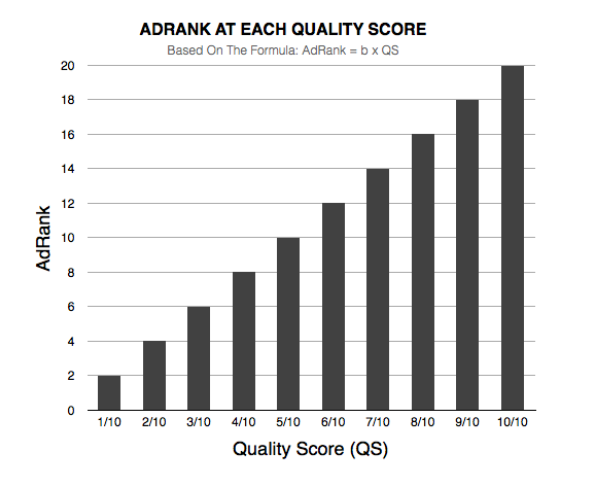
A Quality Score is a tool or metric that helps advertisers know what to improve on their campaigns; they have indicators such as ads, landing pages and keywords.
They can adjust and optimize the campaigns based on their quality score. Hence coming from the root word quality then it's all about the good stuff or the quality of the ads.
Ad Rank helps advertisers understand campaign information to determine what rank will their ad show on the search engine results pages or SERP. Both the Quality Score and Ad Rank take to run through the landing page, keywords and ads to determine the score/rank. But both have a different purpose.
Remember Quality score is for the quality of your ads while AD Rank is for the rank of your ads on the SERPS you get it?
Take note that doesn't mean you have a high-quality score on your ads that you'll be on the top of the SERPS; that is a big misconception! Quality score is vital for advertisers or ecommerce brand owners like you. But the Quality Score is an essential tool you have to utilize for assessment of your ads performance.
If your Quality score is high, then you're doing a great job on your ads campaign, but if your Quality score is low, then you need to tweak some changes and see if the changes you have made a difference and try again.
Now with that out of the way, there are different types of Quality scores that you should be aware of, and we'll dig in on how you can improve them in the process.
What are the effects of a high Quality Score?
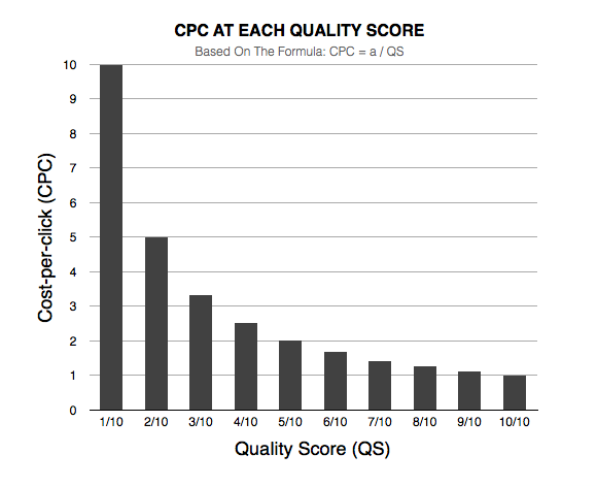
Many marketers aim to have a high Quality Score for their ads, and that is not a bad thing. Every ecommerce brand wants to have high-performing ads and at the same time, have a high Quality Score for better traffic and ROI.
Here are the effects of a high Quality Score and why you should aim for it!
1. You pay less when you have more click-through rate– This is a win-win situation for your ecommerce brand.
2. You pay less when you have a better or higher ad position– You can increase your ROAS and make more money from Google ads.
3. High-performing ads
See?
It’s not bad to have a high Quality Score which is why many marketers are competitive on this part since it makes sense. Marketers can save money and at the same time benefit from having optimized ads.
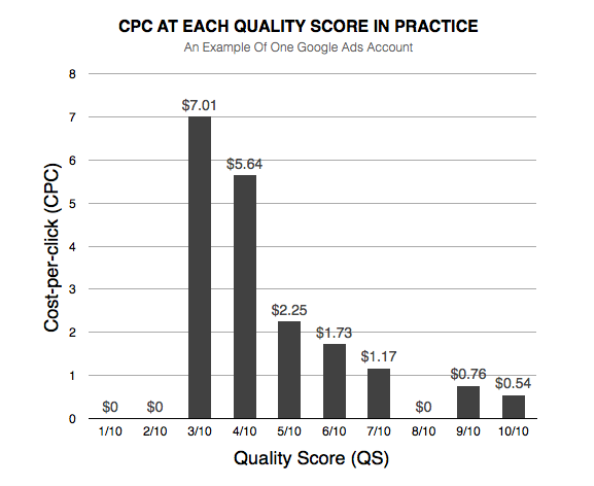
There are different types of Quality Scores that you should know, and I listed it all down for you.
Types of Quality scores
⦁ Account-Level Quality Score
⦁ Ad Group Quality Score
⦁ Keyword-Level Quality Score
⦁ Ad-Level Quality Score
⦁ Landing Page Quality Score
⦁ Display Network Quality Score
⦁ Mobile Quality Score
Yes, it can be overwhelming to see the many quality scores that you have to know and differentiate. But it's better to know the different types now so that you won't have to get confused later on as you do ads campaigns on other parts of Google.
Account-Level Quality Score
Here's what you have to know about Account-Level Quality Score: it is the overall quality score of your Google Account. If you're familiar with doing an audit on your Google Account for optimization, the same goes to the Account-Level Quality Score.
You have to optimize your Google Account to improve its quality score. This Quality Score is where you can see the performance history of all of your keywords and ads in an account.
Google prefers old accounts than new ones since old accounts already have history and the performance of an old account will outperform the new one.
Take note that it can take a long time to see improvement on a low-performing account even after you already made changes for improvement.
Okay, so you're probably thinking WHAT THE HELL?
I'd rather start new by using a new account than wait for my old account quality score to improve since it can take FOREVER!
Hmmm, good thinking; however, it is against Google's policy to start over with a new one. So make sure that you made all of the necessary changes that you have to with the old one from restructuring keywords to creating a new ad and updating your ecommerce brand landing page.
Your ecommerce brand will have a whole new makeover for your on its components.
Also, to avoid any hassle by deleting low-performing keywords, make sure that it's correct since when you remove keywords from your account, Google's system will have issues. And it can be a whole lot of hassle and problems for you. So make it count!
It's important to mention that Google denied the existence of the Account-level quality score, but since we're already here, it doesn't hurt if you'll look into it since most marketers still do.
Ad Group -Level Quality Score
Ad Group-level Quality Score helps marketers know what the areas they need to improve on within a campaign are. Example, you need to work on your lowest average quality score first to help you boost your ROI.
There are many ways for you to improve Ad-Group-Level Quality Score, such as restructuring your campaigns and ad groups, and editing CTR ads that are low-performing. The Ad Group- Level Quality Score can be seen on the “Ad Groups Tab.”
Keyword-Level Quality Score
If your keywords are high or low-performing, then keyword-level quality score is the one you should look at.
This Quality Score is visible on the Google Ads Interface, and a keyword's quality score is scored from 1-10 and 10 being the highest.
If you're wondering how Google calculates your keyword-level score, it is calculated by the performance of search queries that matches your keyword.
The keyword quality score is also based on historical performance on Google. The quality score will start to kick in once the keyword gets impressions, and it will reflect on your account. This is called the impression threshold.
Also, you don't have to worry if you have a lot of low impressions keywords on your account since these keywords will not be evaluated based on their Quality Score in the account.
Here's the things that you'll see once you review the Keyword Quality Score of your account.
⦁ Quality Score
⦁ Ad Relevance
⦁ Expected CTR
⦁ Landing page experience
You'll also find the history of your previous Quality score on you account based on the following:
⦁ Quality Score (historic)
⦁ Ad Relevance (historic)
⦁ Landing page Experience (historic)
⦁ Expected CTR (historic)
With the Keyword Quality score, you're not just checking the keyword, but you'll also be able to piece everything together, and it'll make sense on why you have a high or low-performing quality score on your keywords. You'll be able to change or improve keywords on your ads campaign on what you have reviewed.
You can boost keywords impression by analyzing the impression share data or the percentage of the times your ads are being shown.
Another strategy that you can do is loosening up the keyword match types to avoid getting low impressions.
You can also loosen the themes, balance everything out by not being too specific and too broad. You can utilize the Opportunities Tab in the Google Ads interface to find the best keywords that are relevant to yours.
Landing Page Quality Score
Google has three landing page quality factors, and these are relevant and original content, navigability and transparency. If you got it all together, then you're in a sweet spot. Landing page quality score also determines your keyword quality score.
Landing pages should be compelling and accurate enough for a website visitor to be attracted to your ecommerce brand. It's not just for the sake of adhering to the policies of Google, but it's good to remember that content is king online.
If the landing page content is relevant and optimized, then it's good to go. If the landing page loading time takes longer, that is a bad thing. Remember that people who clicked your ads and into your landing page don't want to wait around. They want to see what you got ASAP!
And you want to leave a good impression on your potential customers by having fast landing page loading time and credible site information at hand.
Google uses both automated systems and human evaluation to determine your landing page quality score, and it's entirely subjective.
Make sure that your landing page is accessible to both mobile and desktop devices for an optimized landing page experience. Your potential customers will thank you for it!
Ad-Level Quality Score
Ad Level Quality Score is another area of Quality Score, which is prominently tied to CTR and relevance. Each of your ad groups will have a different click-through-rate, which is on one of the factors that will determine your Quality Score.
One strategy that you can do to boost your CTR is to add Dynamic Keywords Insertion or DKI for your Search Network Campaigns.
Ads that are high performing yet aren't converting so it won't affect you Return on Investment or ROI.
You have the option to pause low-performing ads without affecting your Quality Score. But deleting ads will delete its history so be careful on removing ads.
If your ads show extension, then one of its factors is the Quality Score. But you need to have a competitive bid and good Quality Score to have extensions like site links to boost your CTR.
Here are tips and tricks you can do to get the most out of your Ad Level Quality Score:
⦁ Optimized Ad extensions like descriptions with your site links
⦁ CTR with less than 1.5% should be worth checking out
⦁ A/B testing your ads
⦁ Test your display URL
⦁ Use keyword variations in your ad test description.
⦁ Use Dynamic Keyword Insertion in your display URL and ad headline.
Let’s move on to Mobile Quality Score, shall we?
Mobile Quality Score
Google calculates Mobile Quality Score is the same as any Quality Score regardless of the devices you choose, such as computers, Ipad or smartphones. What happens is that the system checks the user and business location aside from that the device location and the location extensions data.
Quality Score calculation for mobile devices or computers with full internet browsers has the same calculation; however, your ads will have a different Quality score for mobile and desktop.
The recommended structure of Google is to separate a combined campaign the target to All Devices including computers, mobile phones and tablets. The reason is to separate mobile from desktop.
You'll see change when doing this either increasing or decreasing your Quality Score.
Take note that if you have a low mobile score, then it can have a negative impact on your mobile ad performance which will affect your traffic, ROI and conversions of your ecommerce brands especially for shopping campaigns on smartphones.
Here are ways that you can improve your mobile devices quality score:
⦁ Utilize mobile-friendly extensions
⦁ select the ad extensions that will offer better user experiences
⦁ faster mobile loading speed
⦁ improved landing page
Not but not the least let's go into the Display Network Quality Score now that we've touched on Mobile Quality Score.
Display Network Quality Score
The Google Display Network display quality score works differently than the Search Network. Since Google Ads will check out your ad's historical performance on the site and if you're qualified to other websites.
The same things are necessary, such as the ads, landing page and keywords for the quality score.
One of the factors that affect your Display Network quality score is the bidding options that you choose.
If you're using a CPM model, then the quality score is based on the quality of your landing page.While if you're using a CPC bidding, then Google will check the historical CTR of the ad and the quality of the landing page.
You can test the waters by testing different ad types to improve your Display Network quality score. Try adding images, responsive ads, evaluate your relative click-through rate, utilize the placement reports, and target relevant sites and demographics.
We're done with the various types of Quality Scores and how you can improve them but here are other suggestions on how you can adjust the parts of the quality score.
For the Expected CTR
⦁ To improve the structure of ad campaigns and ad groups.
⦁ Reduce the number of keywords in a given ad group, perhaps even creating single keyword ad groups is a better option.
⦁ Add a few negative keywords to the associated ad group.
⦁ Optimize ad headlines and create compelling ad's call to action
⦁ Include the keyword in the display URL
⦁ Take into consideration the user's intent.
⦁ Include ad extensions for mobile devices and such
⦁ Split test ads if you can
For the Ad relevance
⦁ Create specific ad groups
⦁ Select keywords carefully and utilize them
⦁ Include keywords in your ad text for optimization
⦁ Keep ads simple yet engaging
⦁ Send traffic to a relevant post-click landing page
⦁ Test multiple ads for better results
For the Landing page experience
⦁ Improve the loading time of the page
⦁ Include links to the privacy policy and terms of use
⦁ Create relevant campaign and ad-group-specific landing pages
⦁ Check the page content carefully and see if it matches the ad's keywords and intent
⦁ Ensure that the Google algorithm crawlers can run through the landing page
Conclusion
One of the best things that marketers can do is to monitor the Quality Score continuously and optimize the parts that need to be improved on when necessary.
It's easy to be consumed by the grades and competition online, but it's best to keep in mind what your goals in aiming for a higher quality score are?
Having a high Quality Score is essential for running an efficient and high-performing ecommerce brand online. Better to work on the low-performing parts and focus on continually improving your account for fewer problems in the future.






